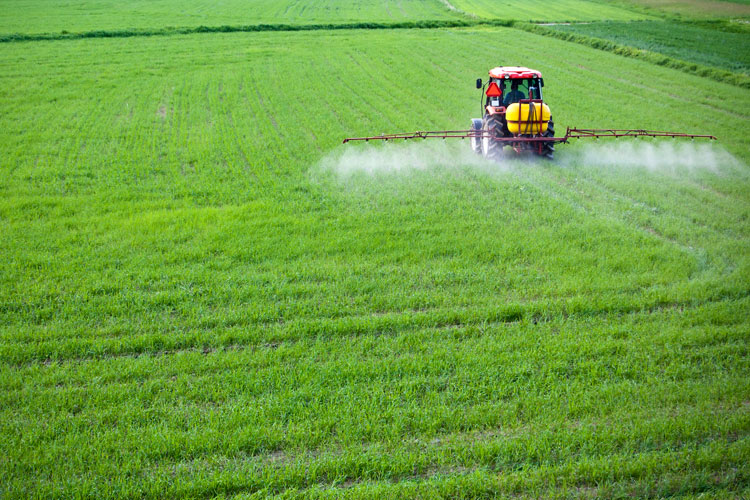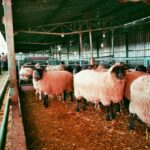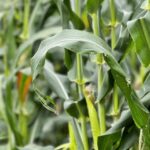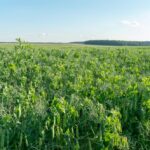The agricultural industry is undergoing a rapid transformation thanks to technological advancements, and one of the most groundbreaking innovations in modern farming is artificial intelligence (AI). AI-powered solutions have begun to revolutionize various aspects of farming, from crop monitoring to pest control. One of the most significant and promising applications of AI in agriculture is in smart fertilization. By leveraging AI algorithms and data-driven insights, farmers can optimize the use of fertilizers, reduce costs, and enhance crop yields in a more sustainable and efficient way.
The Importance of Fertilization in Agriculture
Fertilization plays a crucial role in ensuring that crops receive the essential nutrients they need to grow healthy and strong. However, traditional fertilization methods often involve applying fertilizers in large quantities at predetermined intervals, which can lead to several problems. These include overuse of fertilizers, which can harm the environment, wasted resources, and unnecessary costs for farmers.
AI-powered smart fertilization systems address these issues by providing more targeted, precise, and data-driven fertilization strategies. These solutions use advanced algorithms, soil data, weather conditions, and crop needs to determine the optimal amount of fertilizer required for specific areas of a farm. This allows farmers to apply the right amount of nutrients at the right time, resulting in healthier crops, cost savings, and a reduced environmental impact.
How AI Powers Smart Fertilization
AI for smart fertilization works by combining a variety of data sources to create precise, customized fertilization plans for different parts of a farm. Here’s how AI typically enhances the fertilization process:
1. Soil Monitoring and Analysis
AI systems rely on soil sensors and remote sensing technology to collect data on soil health. This includes information on soil moisture, temperature, pH levels, nutrient content, and organic matter. By analyzing this data, AI can identify nutrient deficiencies in the soil and recommend the appropriate type and quantity of fertilizer needed for each crop. This ensures that fertilizers are applied efficiently and only when necessary.
2. Predictive Analytics
AI uses predictive analytics to forecast future crop needs based on current conditions and historical data. By factoring in variables like weather patterns, seasonal changes, and the growth stage of crops, AI can predict the optimal timing and amount of fertilizer required. For instance, during a particularly dry spell, crops may require more nutrients, or after rainfall, the soil may need less fertilizer. AI helps farmers make data-driven decisions on when and how much fertilizer to apply.
3. Variable Rate Technology (VRT)
Variable rate technology (VRT) is one of the core elements of AI-powered smart fertilization. VRT allows for the application of fertilizers at varying rates across a field, depending on the specific needs of different areas. This technology uses real-time data, such as satellite imagery and soil sensors, to map out areas of a farm that need more or less fertilizer. The result is a much more efficient and customized fertilization plan that saves both money and resources.
4. Machine Learning for Continuous Improvement
Machine learning, a subset of AI, enables systems to learn from the data they collect and improve over time. As AI-powered fertilization systems continue to gather data from a farm, they can refine their predictions and recommendations, making fertilization practices even more accurate with each season. This continuous learning process helps farmers optimize crop yields and resource usage over time, leading to sustainable farming practices and increased profitability.
Benefits of AI-Driven Smart Fertilization
AI for smart fertilization offers a range of benefits for farmers, from economic savings to environmental sustainability. Here are some of the key advantages:
1. Cost Savings
By applying fertilizers only where and when they are needed, AI-driven fertilization helps reduce the amount of fertilizer used, leading to significant cost savings. This is especially important in South Africa, where fertilizer prices can fluctuate, and farmers are under pressure to reduce production costs while maintaining high yields. Smart fertilization ensures that farmers don’t over-apply fertilizers, which is both wasteful and costly.
2. Increased Crop Yields
The precise and tailored approach to fertilization provided by AI ensures that crops receive the nutrients they need for optimal growth. By delivering fertilizers at the right time and in the right amounts, AI helps improve soil health and boost crop yields. The result is more robust and productive crops, leading to higher harvests and increased profitability for farmers.
3. Environmental Sustainability
One of the most significant environmental concerns associated with traditional fertilization methods is nutrient runoff, which can pollute water sources and harm ecosystems. By reducing the overuse of fertilizers and targeting their application more precisely, AI-powered systems help minimize nutrient runoff, promoting more sustainable farming practices. This reduces the environmental footprint of farming while maintaining productivity.
4. Optimized Resource Use
AI-powered fertilization systems optimize the use of resources such as water, fertilizer, and labor. By using real-time data to determine the exact needs of crops, farmers can apply fertilizers more efficiently, reducing waste and ensuring that resources are used in the most effective way possible. This leads to a more sustainable farming system that maximizes productivity while minimizing costs and environmental impact.
5. Reduced Labor Costs
With AI-driven systems automating much of the fertilization process, farmers can reduce their reliance on manual labor. This automation not only saves time but also ensures more consistent application of fertilizers across the farm. Reduced labor costs and more efficient use of human resources allow farmers to focus on other important aspects of farm management.
The Future of AI in Fertilization
As AI technology continues to evolve, its potential to further revolutionize the fertilization process is enormous. With advancements in drone technology, IoT sensors, and real-time data analytics, farmers will have access to even more sophisticated and efficient AI-powered fertilization tools in the future. These technologies will enable more precise and customized fertilization practices that not only improve yields but also support sustainable farming in the face of challenges like climate change and resource scarcity.
Furthermore, as more data becomes available through satellite imaging, machine learning, and connected farming devices, AI systems will continue to refine their recommendations and improve the accuracy of fertilizer applications. This will enable farmers to achieve even greater efficiency, cost savings, and environmental sustainability.
AI-driven smart fertilization is reshaping the future of agriculture by offering farmers a powerful tool to optimize fertilization practices, reduce costs, and increase crop yields. With the ability to analyze soil conditions, predict crop needs, and apply fertilizers precisely, AI is helping farmers move toward more sustainable and efficient farming practices. In South Africa, where agriculture is vital to the economy, AI-powered fertilization can make a significant impact in terms of both profitability and environmental sustainability. As the technology continues to advance, it holds the potential to further revolutionize farming and shape a more sustainable and profitable future for farmers worldwide.
Join 'Farmers Mag' WhatsApp Channel
Get the latest Farming news and tips delivered straight to your WhatsApp
CLICK HERE TO JOIN






